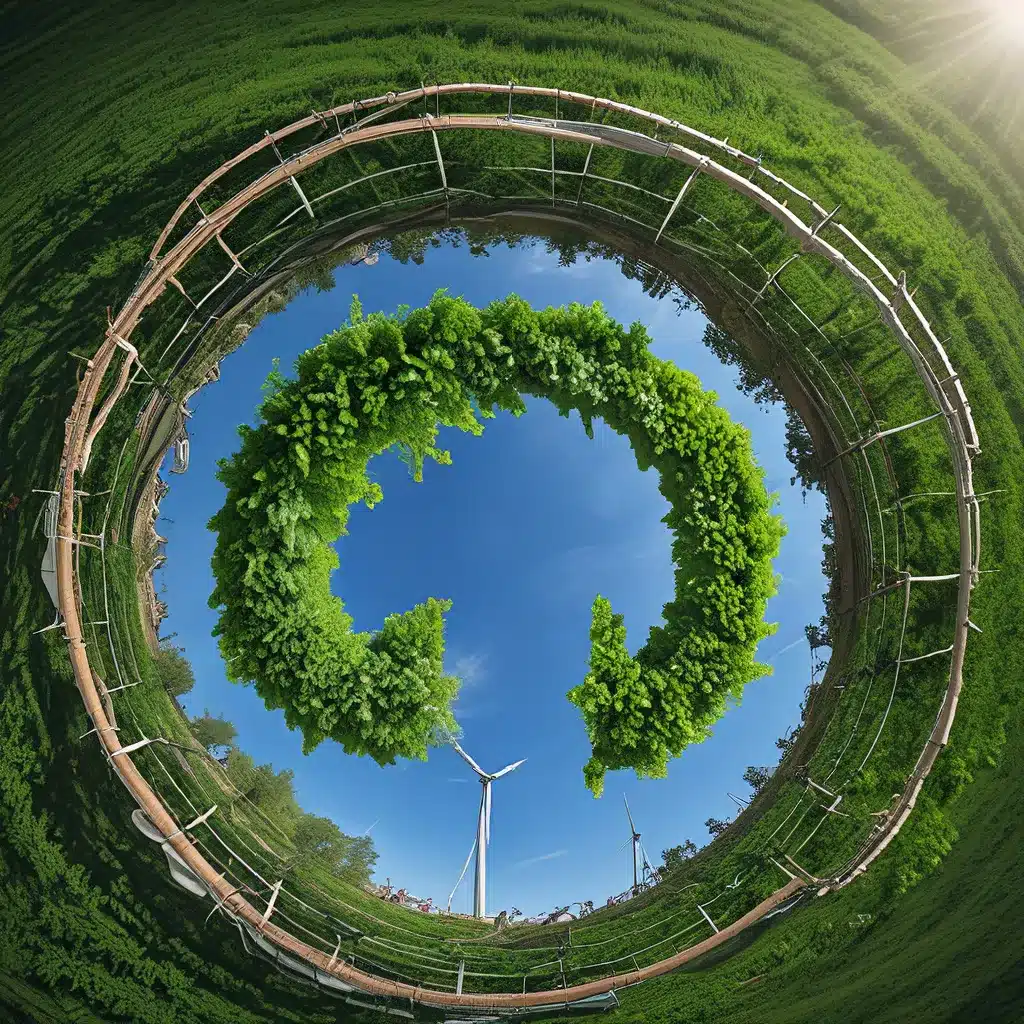
The Power of Renewable Energy in the Circular Economy
As I delve into the topic of renewable energy and the circular economy, I can’t help but feel a sense of excitement. This isn’t just about dry statistics or technical jargon – it’s about redefining the way we think about our resources, our energy, and our impact on the planet. And let me tell you, it’s a game-changer!
You see, for too long, we’ve operated in a linear economy – take, make, waste. We’ve extracted resources, used them to create products, and then tossed them aside, leaving a trail of environmental destruction in our wake. But the circular economy offers a different vision – one where waste is eliminated, materials are constantly recycled and reused, and nature is actively regenerated. And at the heart of this sustainable system is the power of renewable energy.
Think about it – renewable energy sources like solar, wind, and hydropower don’t deplete our finite resources. Instead, they harness the natural cycles and processes of our planet to generate the energy we need. And when you combine that with the principles of the circular economy, you’ve got a match made in heaven. Renewable energy solutions can play a crucial role in powering the circular economy, helping us to break free from the shackles of our linear past.
Harnessing the Power of Biogas
One of the most exciting examples of this symbiosis is the production of biogas from wastewater. Now, I know what you’re thinking – wastewater? Yuck! But hear me out. When organic matter in wastewater undergoes anaerobic digestion, it releases a renewable fuel called biogas. This biogas can then be used to generate electricity, heat, or even fuel, providing a sustainable source of energy.
But the benefits don’t stop there. The residual solids from the anaerobic digestion process can be recovered and used as a nutrient-rich fertilizer, closing the loop and creating a true circular system. It’s like taking something that was once considered waste and turning it into a valuable resource. Talk about a win-win!
The European Union’s new circular economy action plan is a prime example of how this approach is being put into practice. By targeting the entire life cycle of products and introducing both legislative and non-legislative measures, the EU is paving the way for a cleaner, more competitive Europe. And the recovery of biogas and other resources from wastewater is a key part of this strategy.
Powering Wastewater Treatment with Renewable Energy
But the circular economy doesn’t stop at biogas. Another innovative approach is the use of solar-powered wastewater treatment. By combining wastewater treatment with renewable energy generation, we can not only treat wastewater in a sustainable manner but also produce clean, renewable electricity.
The Ellen MacArthur Foundation has highlighted this approach, showcasing how the DC Water utility in the United States has installed solar panels across its Blue Plains Advanced Wastewater Treatment Plant site, adding to its renewable energy mix. This innovative integration of renewable energy and wastewater treatment not only reduces the environmental impact of energy production but also recovers valuable resources from the wastewater stream.
The beauty of this approach is that it’s a true closed-loop system. The renewable energy generated from the solar panels powers the wastewater treatment process, which in turn recovers resources that can be reused or recycled. It’s a virtuous cycle that embodies the very essence of the circular economy.
Recovering Resources from Wastewater
But the circular economy’s reach extends even further when it comes to wastewater. In addition to biogas and renewable energy, valuable resources like phosphorus, nitrogen, and metals can also be recovered from wastewater. This not only reduces waste but also provides a sustainable source of materials that can be reused and recycled, promoting resource efficiency and sustainability.
Scottish Water, for example, is recovering grit from wastewater for use in the construction industry. By turning what was once considered waste into a valuable commodity, they’re closing the loop and creating a more sustainable future.
This is the true power of the circular economy – the ability to see opportunities where others see only problems. Instead of simply treating wastewater and disposing of the byproducts, we can transform it into a treasure trove of renewable energy and recoverable resources. It’s a mindset shift that’s not only good for the planet but also good for business.
A Future of Possibilities
As I reflect on the incredible potential of renewable energy and the circular economy, I can’t help but feel a sense of excitement and optimism. This isn’t just about abstract concepts or futuristic visions – it’s about real, tangible solutions that are already being implemented and making a difference.
Sure, there are still challenges to overcome, and the road ahead may not be a smooth one. But with the commitment and collaboration of governments, businesses, and individuals, I truly believe we can create a future where waste is a thing of the past, and renewable energy and circular systems are the foundation of our prosperity.
So, let’s not just talk about it – let’s dive in and be a part of the change. Whether it’s investing in renewable energy solutions, advocating for circular economy policies, or simply adopting more sustainable practices in our own lives, we all have a role to play. Because when we work together, the possibilities are endless.
The time for action is now. The future is ours to create. Let’s get to work and close the loop!

